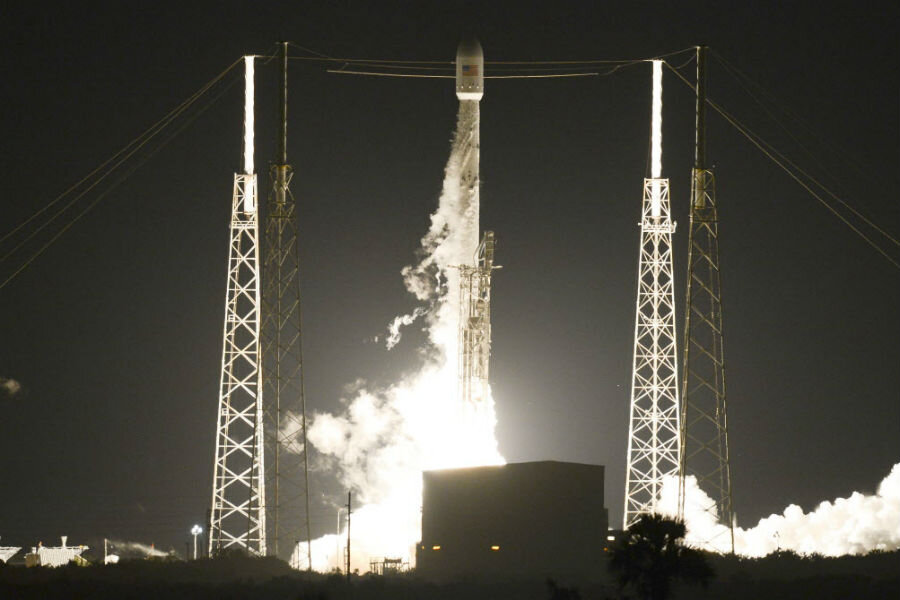SpaceX explosion traced to its helium system. Now what?
Loading...
SpaceX’s explosion mystery may be one step closer to being solved, according to a statement released Friday. The company says the helium system “likely suffered a large breach” during a static fire test earlier this month.
The Falcon 9 rocket exploded early on September 1, during a static flight test on its launch pad in Cape Canaveral. The rocket was preparing to launch the Amos-6, an Israeli communications satellite, but both rocket and satellite were destroyed in the explosion.
After the incident, SpaceX founder and CEO Elon Musk took to Twitter, calling on the public and a range of government bodies to help the company figure out the causes of the explosion. Since then, an Accident Investigation Team – composed of representatives from SpaceX, the Federal Aviation Administration, NASA, the US Air Force, and industry experts – has been collaborating to determine possible causes. SpaceX hopes the investigation leads to a more reliable spacecraft.
“Getting back to flight safely and reliably is our top priority, and the data gathered from the present investigation will result in an even safer and more reliable vehicle for our customers and partners,” the company said in a statement Friday.
The Accident Investigation Team, which involves a degree of collaboration between the public and private sectors unprecedented in space flight, has been analyzing more than 3,000 channels of data. This involves looking at audio and video recordings, as well as debris collected from the rocket. The short span of the incident — the entire explosion lasted just 93 milliseconds — creates complications in understanding precisely what happened.
At this point, investigators believe that the explosion can be traced to the upper-stage helium system. Helium is injected into fuel tanks to keep them structurally sound as the launcher burns fuel during flight. This system apparently leaked during the static test.
However, Friday's SpaceX statement underlined that “All plausible causes are being tracked in an extensive fault tree and carefully investigated,” suggesting that there may be more to the story – and SpaceX is committed to finding out what. That may not be surprising, given the financial costs of such explosions: over $250 million in technology went up in flames. No one was harmed in this explosion.
SpaceX has ruled out any connection between this explosion and another incident, which took place in June 2015. In that case, the explosion occurred two minutes after liftoff, when the helium was under high pressure. The company traced that issue to a faulty bracket in the oxygen tank, leading Musk & Co. to change their bracket supplier and replace thousands of brackets across the SpaceX fleet.
In this case, the explosion occurred eight minutes before the main engines were scheduled to ignite. According to Spaceflight Now, propellant tanks are not normally pressurized for launch at this point.
SpaceX’s rocket factory in Hawthorne, Calif. is still producing rocket parts, the company said. The statement explained that this was occurring in a “methodical manner” as the Accident Investigation Team clears each component.
Why the rush to find the cause of the Sept. 1 explosion? The company hopes to be back in flight – and safer than ever – by November. The 70 missions on its manifest represent over $10 billion in revenue for the company from commercial and government customers.








